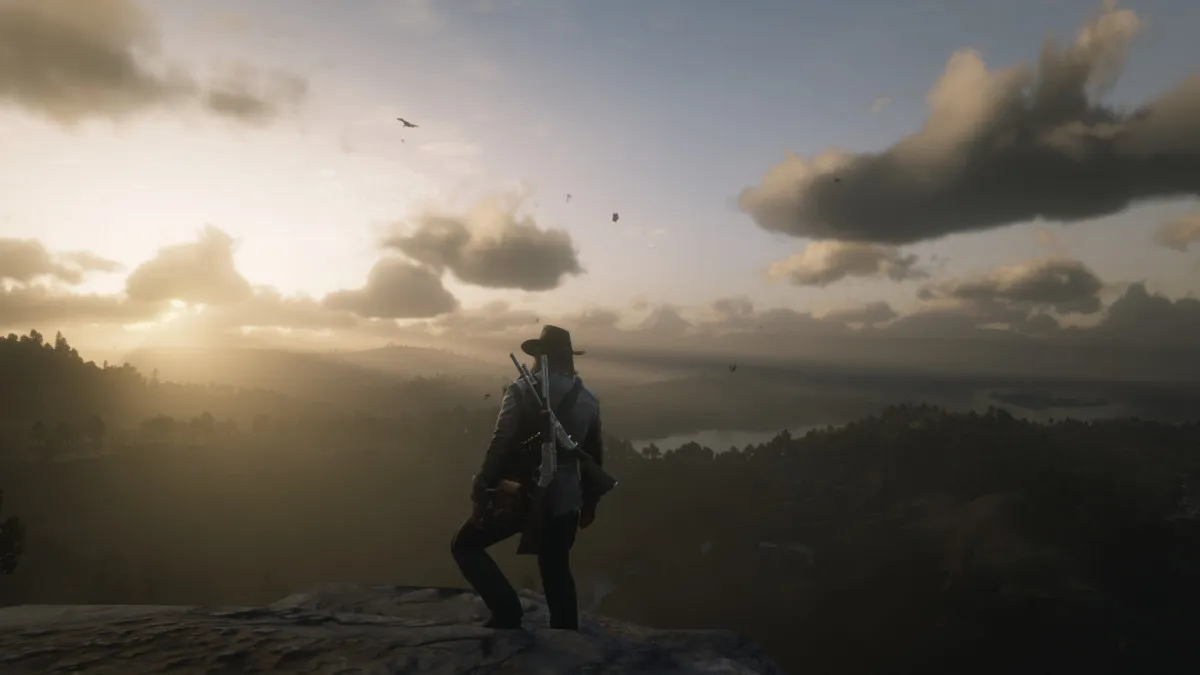In the decade since the release of the 5th Edition (5e) of Dungeons & Dragons, the TTRPG landscape has changed, and a surge of new players have come into the hobby from actual plays, podcasts, and media like Stranger Things and Honour Among Thieves.
Accessibility has become a priority to bring new people in, and the Dungeons & Dragons Player’s Handbook 2024 is a great example of how a classic TTRPG can still appeal to players who may never have touched a Player’s Handbook before.
10. Annotated character sheet
A D&D character sheet can be intimidating to a first-time player, so the Player’s Handbook breaks down the sections step by step, with numbers that relate each section to the relevant part of the character creation process. The character sheet in the book also has details like whether a spell requires concentration ready to fill in from the class spell list, which simplifies bookkeeping and highlights key mechanics for new players.
9. Class summary page
Even D&D veterans might struggle to call to mind every single subclass of the game’s history, so the single-page summary of all included classes and subclasses is useful for everyone. It’s particularly helpful for people who might have seen a class being played and want to try it for themselves or have no idea what they want to play and are looking for inspiration.
8. Detailed examples of play
The classic ‘example of play’ script can be cringey to read, but it’s also a great tool to teach people what to expect at the table. Each section of the script has an explanation of which rules the players are using and how they work, meaning that you can learn as you read. These days, most players are more likely to learn from an actual play, but those can be variable in terms of how complete their mechanical explanations are, so this example of play gets everyone on the same page.
7. Background ability scores
Species ability score modifiers have been optional for some time, but now it is official: no longer are particular species just more suited to specific classes. Instead, ability score modifiers are linked to your character’s background, with three ability scores to choose from. While this still provides some limits to spur creative solutions, it encourages players to think outside the traditional species + class combo and engage with their character’s history.

6. Simplified subclasses
D&D 5e‘s wealth of subclasses started to become a bit unwieldy when spread across three major books and scattered across others, especially with the sheer number of Cleric domains presented in the original 5e Player’s Handbook and added to over time. The D&D 2024 Player’s Handbook has opted to have 4 subclass options for every class, and most are simplified to take only half a page, with an inspiring piece of character art on the other half.
5. Visual presentation of concepts
Tabletop RPGs can be hard to wrap your head around for the uninitiated. Unless you’ve watched an actual play series or you know someone who tells you what the many different kinds of dice are, it can get confusing quickly. The D&D 2024 Player’s Handbook uses neat visuals to illuminate some key concepts: one picture demonstrates creature sizes on a grid by using the flagstones under the characters and monsters. Making these connections between mechanics and story early on is a vital step in making TTRPGs accessible to everyone.
4. Feats are for everyone
Feats provide fun ways to differentiate between characters and make great builds, but for the last decade, they have been an optional rule where a player can forgo valuable attribute score improvements for the sake of a really cool ability, often one that is more about flavor than mechanical optimization. Now, everyone gets a feat to start with based on their background, which replaces the highly variable background abilities from the original 5e Player’s Handbook. While it isn’t quite the free-pick paradise I wanted, having backgrounds linked to a central set of feats that can be accessed through leveling means that background feats can also be more effective, consistent, and evocative.

3. Rules glossary
This is a common practice in TTRPGs, but it’s still extremely good to see such a thorough rules glossary in an easy-to-find place. This also gives us some insights into plans for the future Dungeon Master’s Guide and Monster Manual: the term ‘Bloodied’ originated in 4th Edition D&D to describe a monster having taken half its hit points in damage and is included in the D&D 2024 Player’s Handbook, suggesting we might see the reintroduction of this valuable mechanic.
2. Summoned creature stats
The stats for every creature that the players might need to know to play their characters are in the back of the Player’s Handbook, from pseudo-dragon familiars to ponies. This quality of life change might be more of a concession to the staggered release schedule of the Dungeon Master’s Guide and Monster Manual (planned for November 2024 and February 2024, respectively) than anything else, but it also happens to be a really neat resource for players.
1. Nuanced class spell lists
It seems obvious, but the addition of schools of magic and a few codes to the class spell lists (representing specific material components, ritual casting, and whether a spell requires concentration) is wildly useful. The ability to scan down your class’s spell list with that information ready to hand often makes complex spell management much faster. It will be interesting to see whether this is also true of spellcasters in the Monster Manual, as that would be a boon to overworked Dungeon Masters!














Published: Oct 19, 2024 2:02 PM UTC